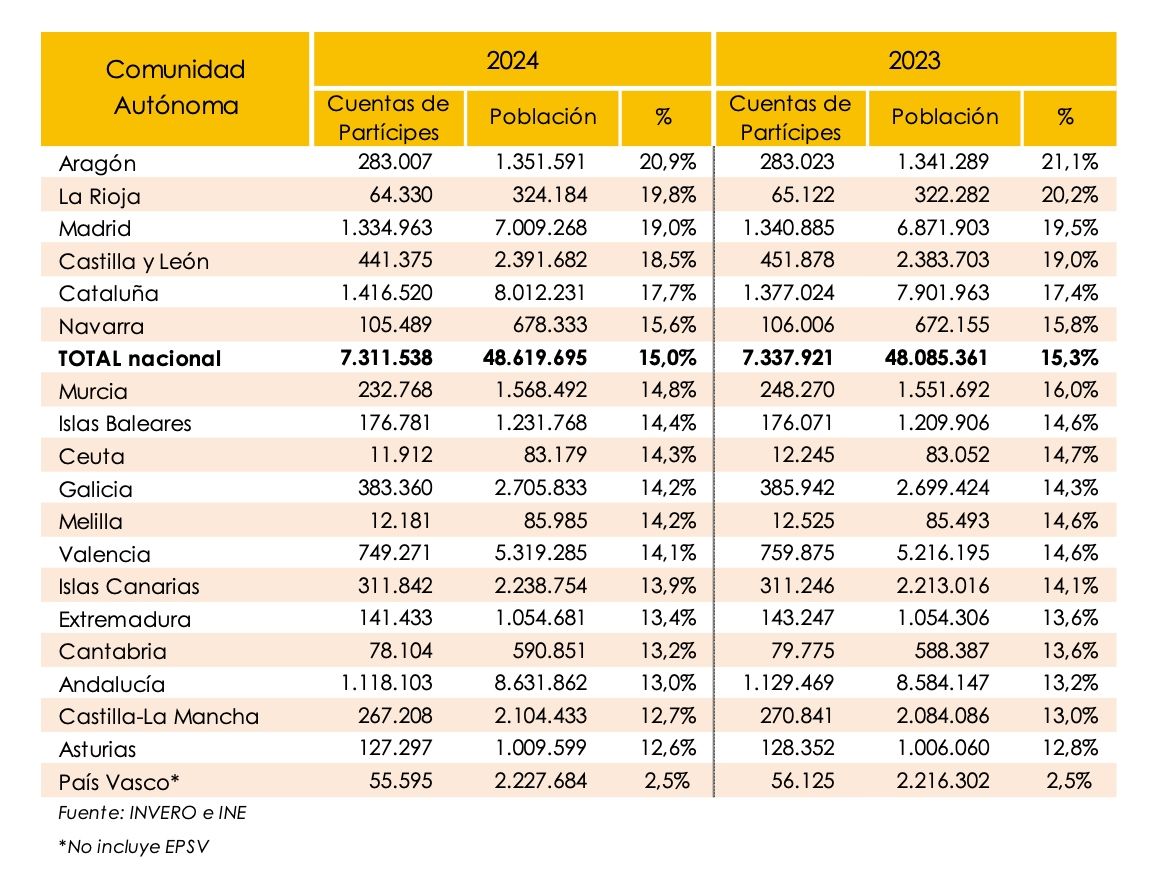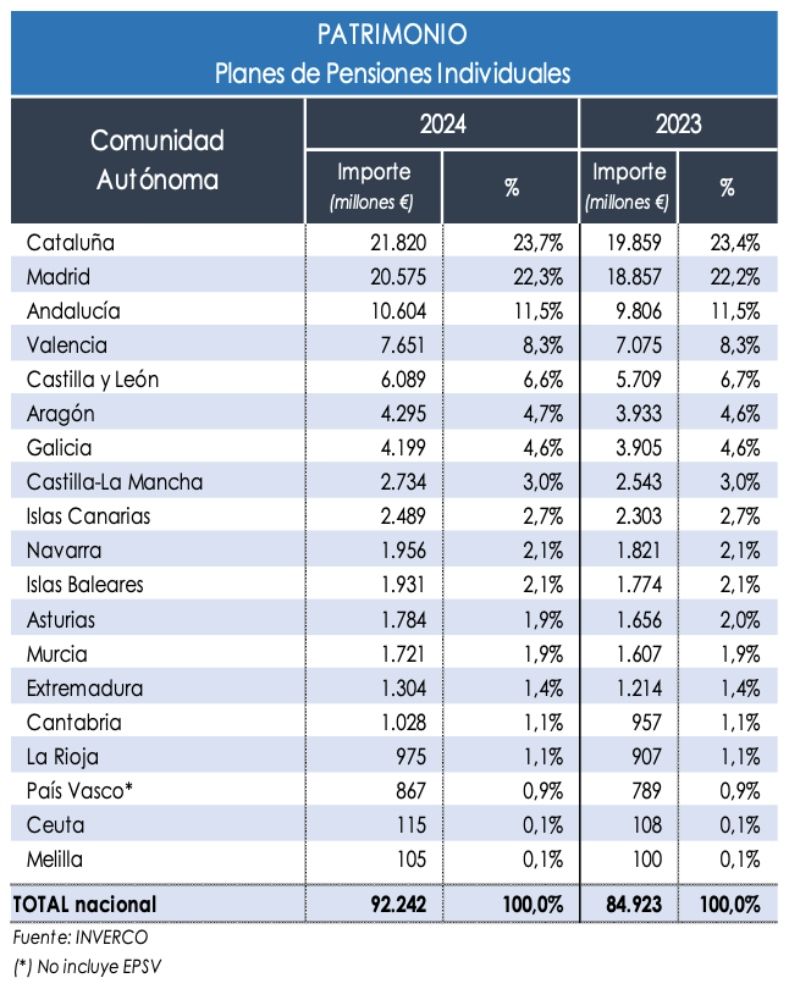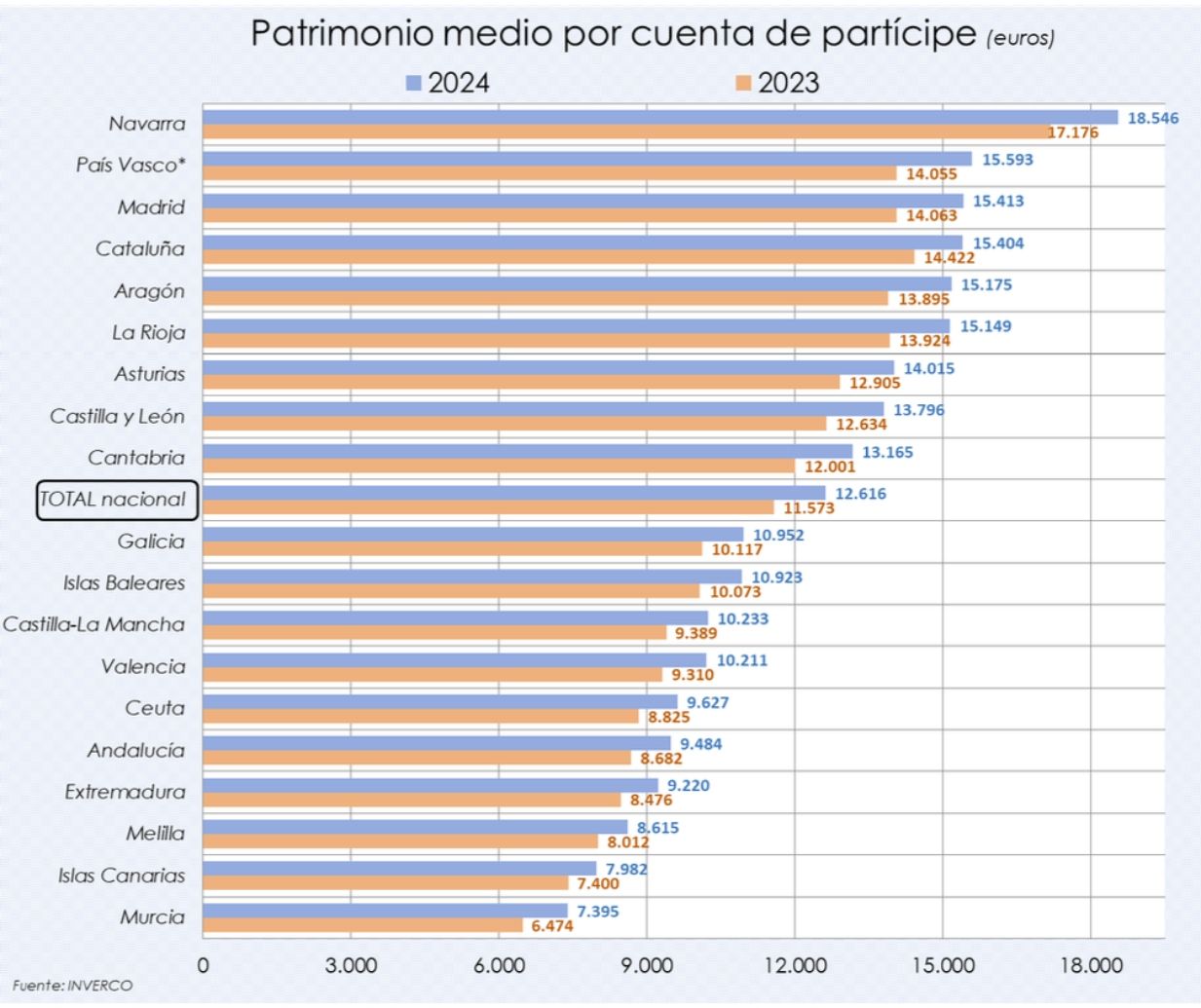Failure of employment pension plans due to “lack of incentives and slow agreements”
Saving for retirement remains a pending subject for the vast majority of Spaniards, as shown by the information of public organizations and also of sectoral ones, such as Inverco and Unespa, in addition to bank and insurance study services. An added problem is that the Spaniards are not convinced by pension plans: those of character personal, individual, They are not seen as an attractive product, due to the strict regulation of contributions and their lukewarm taxation; and the Collective and company plans are still not taking off. As a result, pension funds are experiencing a worrying crisis.
The current governor of the Bank of Spain, José Luis Escrivá, Being Minister of Social Security, he revolutionized the individual plans, reducing to 1,500 euros the allowed annual contribution, and reformed business plans, creating in the process simplified funds, designed for self-employed people and small businesses. The objective was promote collective savings as a source of complementary income to the public pension.
However, the reality is that, at closing 2024, the number of accounts participants in personal pension plans it was so only 7.31 million, which means that there has been a slight decrease of 0.4% compared to 2023, According to the latest report of the Inverco Observatory. That is to say, far from increasing citizens with pension funds, the percentage has even gone down. And only in four autonomous communities (Catalonia, Balearic Islands, Canary Islands and Aragon) have unitholders grown in 2024.
PERCENTAGE OF POPULATION WITH INDIVIDUAL PLAN

In more detail, Inverco data confirms that only 15% of the population At the end of 2024, Spain had a pension plan. Although there are autonomous communities above this average, such as Aragón (20.9% of the population has a plan), La Rioja (19.8%), Madrid (19%) and Castilla y León (18.5%), the reality is that savings in pension funds still not taking off, due to ‘fiscal hack’ given to individuals, since those of employment are not convincing either to employers or unions.
The money saved goes up, but it is because of profitability
And, while the people with pension plan they stagnate, In the best of cases, Inverco statistics show that the accumulated savings increases, but it is due to the notable revaluations in the financial markets, and not precisely because the holders have decided to make large contributions.

Specifically, the heritage of the individual funds closed the year with 92,242 million euros (8.6% annual increase), while the employment system was located in 38,819 million (5.9% more than in 2023). Now, when explaining this apparent improvement, Inverco admits that “the revaluation of the individual system pension plans by the positive returns generated allowed compensate for the contribution deficit derived from the reductions in the limits imposed in 2021, until leaving the maximum legal limit of contributions to individuals at 1,500 euros per participant per year.
Furthermore, the collective investment association states that “the boost to employment plans has not had the effect desired, Therefore, for all pension plans, the volume of net benefits has increased for the fourth consecutive year. Or what is the same: with 2024 marks four years in which more money goes out than comes in in pension funds.
Therefore, the positive profitability achieved by the funds in 2024 is what saved the heritage that year, which otherwise might have stagnated or even decreased. In fact, the average profitability of pension plans in Spain stood at 9.3% in 2024 for personal plans, driven by the good performance of equities. A percentage almost identical to the increase in assets (the aforementioned 8.6%).
12,600 euros/person on average in individual plans
In this context of lethargy in retirement savings, where only 15 out of 100 people have a private fund, and the figure is not growing, the average assets for each participant increased to 12,616 euros, compared to 11,573 euros in 2023, which represents an increase of 9% and a new historical maximum, according to Inverco data.

However, it is a very low average savings, which in no case allows us to face the arrival of retirement with guarantees. And, again, this percentage increase in individual portfolios is almost identical to the profitability achieved in 2024.
It must be taken into account that in Spain, the The weight of private pensions is only 8%4 of GDP, in contrast to countries around us, which exceed 100% of GDP, and the very clear example of Holland, where they represent 230%.
Experts call for reforms to save
From the Inverco Observatory, they recall that a report recently published by the OECD on the review of the capital market in Spain identifies some necessary reforms for long-term savings.
Among their proposals, they highlight the need to encourage employment plans, In addition to checking the window 10-year liquidity, which has begun to be applied in 2025, as well as decouple financial boundaries of the contributions of the prosecutors.
Right now, anyone who has an individual plan is only can contribute 1,500 euros per year, which are those who enjoy tax benefits; If the contribution were decoupled from taxation, it would be possible to save more per year, although not everything could be reduced from the personal income tax tax base.
The experts also demand that the Government raise tax deductions applicable to individual plans.
As detailed by the Inverco Observatory, while in Spain the Savings in individual and employment plans are equivalent to 8.4% of GDP nationally, the weighted average in the OECD is located in the 58.1%, which highlights the wide margin for growth and the importance of reinforcing incentives for private savings.


